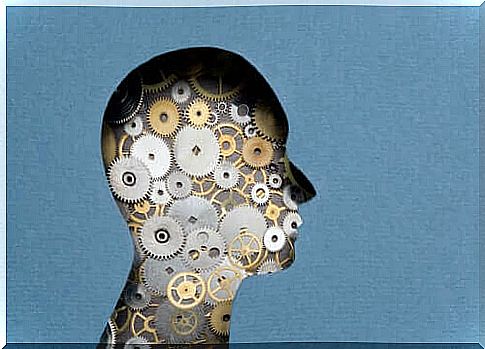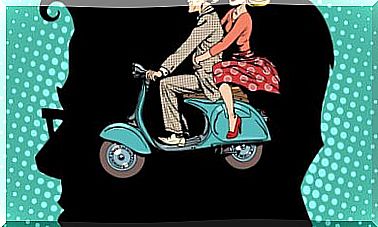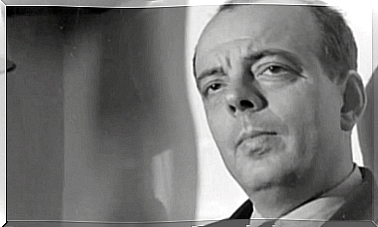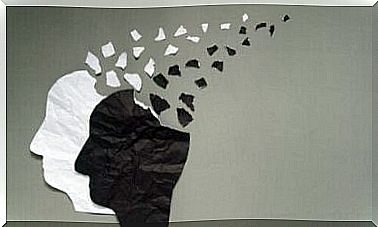Classification Of Cognitive Therapies

The classification of cognitive therapies makes it possible to highlight the fact that all these approaches consider cognition as a determining element of behavior. However, they differ in the importance they give to the different processes in question. These cognitive processes can be actuated by the very ones that constitute human learning.
Cognitive therapies are always based on treatments based on cognitive learning of the problem. They consider that learning is much more complex than the formation of stimulus-response associations. From the therapeutic approach, we insist on addressing cognitive processes as a main element of behavior.
Cognitive therapies are diverse. Thus, they do not have a unified theoretical framework that would integrate them into a general theoretical model. However, they are often grouped together in the same group. That of cognitive-behavioral therapies.

Classification of cognitive therapies
There are 3 main classes of cognitive therapies (Mahoney and Arnkoff, 1978):
- Cognitive restructuring methods assume that emotional problems are the result of maladaptive thinking. These methods therefore aim to establish more appropriate thought patterns.
- Coping skills therapies attempt to develop a repertoire of skills to help the patient cope with a range of stressful situations.
- Problem Solving Therapies : This is actually a combination of the two previous methods. They focus on developing general strategies to deal with a wide range of personal issues. They highlight the importance of active collaboration between patient and therapist
Cognitive therapies based on cognitive restructuring
They aim to identify and modify cognitions. For example, irrational beliefs, distorted thoughts, or negative self-talk.
The most representative therapies are certainly Ellis’ rational emotional therapy or Aaron Beck’s cognitive therapy. But also Marvin Goldfried’s emotional restructuring therapy.
Rational Emotional Therapy (REBT) by Albert Ellis
This theory argues that most psychological problems are due to the presence of ill-adapted (irrational) thought patterns. People would thus to a large extent control their own destiny. However, their behavior is said to be strongly influenced by their beliefs and values.
Rational Emotional Behavior Therapy is a form of brief psychotherapy. It helps identify the thoughts and emotions that lead to personal failure. It therefore examines and assesses the rationality of these thoughts. Eventually, these perceptions are replaced by more productive and appropriate beliefs.
The REBT approach focuses primarily on the present. It helps to understand the mechanisms and patterns of thought and belief that are at the origin of the discomfort. This same discomfort, in turn, leads to harmful actions and behaviors. These interfere with goal achievement or emotional balance.
Beck’s cognitive therapy
The emotional and / or behavioral disturbances are thought to be due to a disruption in information processing caused by the triggering of underlying patterns. The central elements of this theory are as follows:
- In childhood, people develop a series of basic patterns that help them organize their cognitive system.
- They can have automatic thoughts or mental representations. And this, without the prior intervention of reasoning process
- These people can then be victims of cognitive distortions and errors in the processing of information.
- Stressful life events can then trigger these basic dysfunctional patterns
Goldfried’s Rational Systemic Restructuring Therapy
This therapy was developed from Ellis’ REBT. Its aim is to achieve a better specification to adapt it to the self-checking method. The goal is to teach patients coping and problem-solving management techniques. These will allow them to adopt more reasonable behaviors in the face of stressful events.
Meichenbaum’s self-instruction therapy
This theory is based on the work of Luria and Vygotsky on the importance of “internal language” in the regulation of behavior. Self-study programs date back to work done in the 1960s with hyperactive and aggressive children.
Unlike Rational Emotional Therapy (REBT), self-instruction focuses more on the ability to modify behavior and emotions through self-verbalization. And rather than on the patient’s system of irrational beliefs and ideas.
The procedure is as follows:
- Modeling
- External guidance aloud
- Self-instruction aloud
- Self-instructions in a low voice
- Finally, secret self-instructions
Cognitive therapies based on coping skills
These therapies try to acquire skills in the patient so that he can deal with problematic situations adequately.
Among the most interesting therapies in this current, we can certainly mention the stress inoculation therapy of Meichenbaum. But also the anxiety management therapy of Suinn and Richardson.
Meichenbaum stress inoculation therapy
It is based on the development of skills and abilities that allow patients to reduce stress and physiological activation. For this, negative perceptions are replaced by a set of positive thoughts.
In the context of stress inoculation therapy, we can distinguish 3 phases. Note that these phases sometimes overlap. These phases are as follows:
- First, the conceptualization phase
- Then, the phase of acquiring and developing skills
- Finally, the phase of applying the skills acquired
Suinn and Richardson’s Anxiety Management Therapy Theory
The goal of this therapy is to teach the patient to use relaxation among other techniques. He can then use these techniques in certain situations to control his reactions to anxiety.
The results of this therapy appear to be positive. Not just when it comes to anxiety in general. But also anxiety related to exams and fear of speaking out in public.
It also seems to have better results than systematic desensitization. It thus produces positive results in all 3 response channels. The affective, the behavioral and the somatic. Finally, it reduces blood pressure, improves behavior and reduces cognitive problems.

Cognitive therapies based on problem solving
These therapies aim to correct the way the person approaches their problems. They therefore offer systematic methods to resolve this kind of situation.
D’Zurilla and Goldfried’s Problem Solving Therapy
The purpose of this therapy is to show the subject a systematic way of solving his problems. For this, it offers the patient methods of analysis and evaluation of possible opinions. This therefore allows him to have a different perspective to interpret his environment.
This therapy is effective in combination with other techniques. It is the most widely used problem solving therapy. It has a large number of applications. And, finally, it is based on many experimental studies.
Spivack and Shure’s interpersonal problem-solving technique
The goal of this therapy is to increase social adjustment and social skills. To achieve this, we work on interpersonal problem-solving skills.
First of all, it is necessary to define what a problem consists of. A problem arises when there is no immediate and effective response to a given situation.
Alternative thinking is for example used to measure the social adaptation of the patient. Causal thinking (a cause produces an effect) is also used in 8-10 year olds and pre-teens. However, thought will be preferred by consequence in adolescents.
Mahoney’s personal science
Finally, this therapy has a scientific approach to establish a diagnosis and control the conflicting behavior of the patient.
The means implemented are modeling, systematic reinforcement, the progressive accomplishment of tasks as well as the acquisition of self-assessment skills. Thus, it can be an attractive method for people sensitive to scientific reasoning, control and skill.










